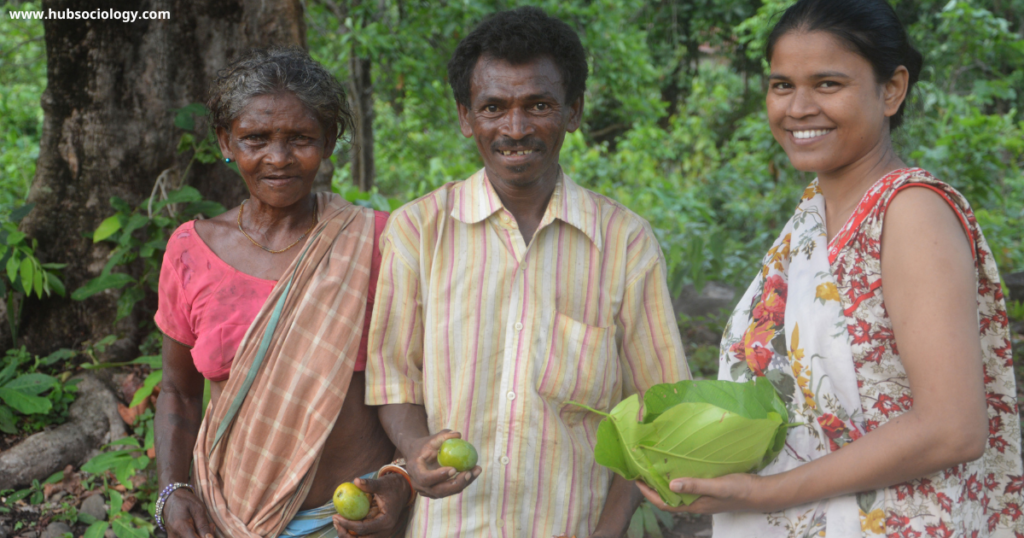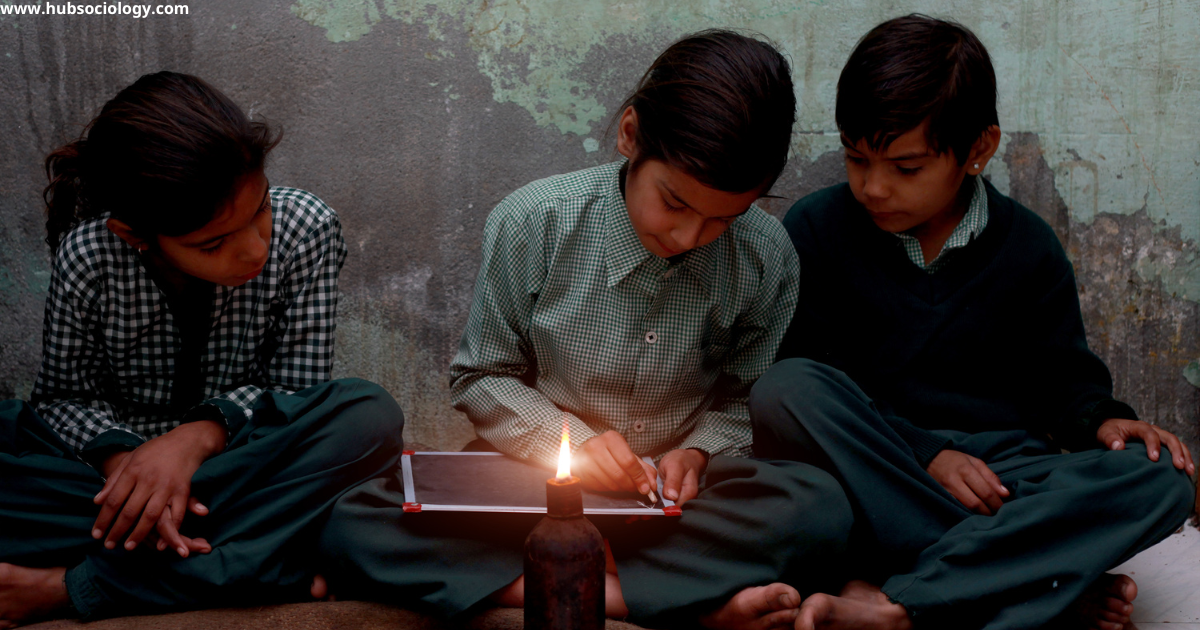Introduction
The caste system is one of the world’s oldest and most severe forms of social stratification, with profound roots in Indian history and culture. It has played a significant role in shaping social relations, economic opportunities, and political power dynamics. From a sociological perspective, the caste system is not merely a hierarchical arrangement of social groups but also a mechanism of marginalization that perpetuates inequality, discrimination, and exclusion.
Marginalization, in this context, refers to the systematic exclusion of certain caste groups from social, economic, and political participation, relegating them to the peripheries of society. This article explores the historical roots of the caste system, its sociological implications, and how it leads to the marginalization of lower-caste communities. Additionally, it examines the resistance movements and policy measures aimed at addressing caste-based discrimination.
Historical Background of the Caste System
The caste system in India is believed to have originated around 1500 BCE with the arrival of the Indo-Aryans and the formulation of the Vedic texts. The system was later codified in the Manusmriti (Laws of Manu), which classified society into four primary varnas:
- Brahmins (priests and scholars)
- Kshatriyas (warriors and rulers)
- Vaishyas (farmers, traders, and merchants)
- Shudras (servants and laborers)
Outside this hierarchy were the Dalits (formerly known as “untouchables”), who were considered impure and subjected to extreme social ostracization. The jati (sub-caste) system further divided these groups depending on occupation and regional norms, resulting in tight social borders.
Sociological Theories on Caste and Marginalization
Several sociological theories help explain the persistence of the caste system and its role in marginalization:

1. Structural Functionalism Perspective
Early sociologists, such as Emile Durkheim and Talcott Parsons, saw social stratification as a necessary aspect of society that ensured division of labor and social stability. From this perspective, the caste system was seen as a means to maintain social harmony by assigning fixed roles to different groups. However, this view has been criticized for justifying inequality and ignoring the exploitation inherent in the system.
2. Conflict Theory Perspective
Karl Marx and later sociologists like B.R. Ambedkar argued that the caste system is a tool of oppression used by dominant castes to maintain power and economic control. According to this view, caste functions similarly to class, where the upper castes (Brahmins, Kshatriyas) exploit the labor of lower castes (Shudras, Dalits) while denying them access to resources.
3. Symbolic Interactionism Perspective
This approach focuses on how caste identities are constructed and reinforced through everyday interactions, rituals, and symbols. For instance, practices like untouchability, segregated housing, and caste-based surnames perpetuate stereotypes and reinforce social hierarchies.
Mechanisms of Marginalization in the Caste System
The caste system marginalizes lower castes through various institutional and cultural mechanisms:
1. Economic Marginalization
- Occupational Restrictions: Traditional caste-based occupations forced Dalits into menial, degrading jobs like manual scavenging, leatherwork (chamar), and sanitation work.
- Land Ownership Disparities: Upper castes historically controlled agricultural land, while lower castes worked as landless laborers with minimal wages.
- Limited Access to Employment: Even in modern sectors, caste networks favor upper-caste individuals, leaving Dalits and OBCs (Other Backward Classes) underrepresented in high-paying jobs.
2. Educational Marginalization
- Historical Denial of Education: Shudras and Dalits were barred from learning Sanskrit and religious texts, restricting their intellectual growth.
- Modern Discrimination: Despite affirmative action (reservations), caste-based bullying, segregation in schools, and lack of resources in marginalized communities hinder educational progress.

3. Political Marginalization
- Exclusion from Decision-Making: Until the 20th century, Dalits and lower castes were denied voting rights and political representation.
- Caste-Based Voting Patterns: Even today, political parties often exploit caste loyalties rather than addressing systemic inequalities.
4. Social and Cultural Marginalization
- Untouchability Practices: Despite legal bans, Dalits in rural areas still face segregation in temples, water sources, and public spaces.
- Caste-Based Violence: Honor killings, atrocities against inter-caste couples, and violent suppression of Dalit assertion (e.g., Khairlanji massacre) reflect deep-seated caste prejudices.
Resistance and Reform Movements
Throughout history, various movements have challenged caste-based marginalization:
1. Bhakti Movement (12th–17th Century)
Saints like Kabir, Ravidas, and Tukaram rejected caste hierarchies and preached equality before God.
2. Social Reform Movements (19th–20th Century)
- Jyotirao Phule founded the Satyashodhak Samaj to educate lower castes and women.
- B.R. Ambedkar, a Dalit leader, fought for Dalit rights, drafted the Indian Constitution, and advocated for reservations.
- Periyar E.V. Ramasamy led the Self-Respect Movement in Tamil Nadu, opposing Brahminical dominance.
3. Dalit Panthers Movement (1970s)
Inspired by the Black Panthers, this movement sought to combat caste oppression through radical activism.
4. Contemporary Activism
- Bahujan Samaj Party (BSP) and other Dalit political parties continue to fight for representation.
- Ambedkarite Movements promote education and anti-caste consciousness among marginalized groups.
Government Policies and Affirmative Action
To address caste-based marginalization, the Indian government has implemented several policies:
- Reservation System: Constitutional provisions (Articles 15, 16, 17) reserve seats in education, jobs, and legislatures for SCs (Scheduled Castes), STs (Scheduled Tribes), and OBCs.
- Protection Laws: The Scheduled Castes and Scheduled Tribes (Prevention of Atrocities) Act, 1989 criminalizes caste-based violence.
- Welfare Schemes: Scholarships, housing programs, and financial aid target marginalized communities.
However, these measures face challenges like:
- Backlash from Upper Castes (e.g., anti-reservation protests)
- Corruption and Poor Implementation
- Continued Social Stigma
Conclusion
The caste system remains a potent force in shaping social inequality and marginalization in India. Despite constitutional safeguards and social movements, caste-based discrimination persists in both overt and subtle forms. A sociological understanding of caste reveals how deeply entrenched power structures resist change, necessitating continuous activism, policy reforms, and societal transformation.
The fight against caste-based marginalization requires not just legal measures but also a cultural shift—where caste identities cease to dictate one’s dignity, opportunities, and place in society. Only through collective efforts can a truly egalitarian society emerge, free from the shackles of caste oppression.

Topic Related Questions
5-Mark Questions (Short Answer)
- Define the caste system and explain its basic features.
- What is meant by ‘marginalization’ in the context of the caste system?
- Name the four primary varnas in the traditional caste hierarchy.
- Who were the Dalits, and how were they treated in the caste system?
- What role did Manusmriti play in legitimizing the caste system?
- Briefly explain the concept of ‘untouchability’ and its social impact.
- How does the caste system contribute to economic inequality?
- What is the significance of B.R. Ambedkar in the fight against caste oppression?
- Name two social reform movements that challenged the caste system.
- What is the purpose of the reservation system in India?
10-Mark Questions (Descriptive Answer)
- Discuss the structural-functionalist and conflict perspectives on the caste system.
- Explain how the caste system leads to educational marginalization of lower castes.
- Analyze the role of the Bhakti movement in challenging caste hierarchies.
- Describe the economic disparities created by the caste system in rural India.
- How does caste-based discrimination manifest in modern workplaces?
- Discuss the impact of the Scheduled Castes and Scheduled Tribes (Prevention of Atrocities) Act, 1989.
- Examine the relationship between caste and political representation in India.
- What were the contributions of Jyotirao Phule and Periyar E.V. Ramasamy in caste reforms?
- How does symbolic interactionism explain the persistence of caste identities?
- Critically evaluate the effectiveness of affirmative action policies in India.
15-Mark Questions (Long Essay-Type Answer)
- “The caste system is not just a form of social stratification but also a mechanism of oppression.” Discuss this statement with sociological perspectives.
- Analyze the historical evolution of the caste system and its impact on contemporary Indian society.
- How does the caste system perpetuate marginalization in economic, educational, and political spheres?
- Compare and contrast the approaches of Gandhi and Ambedkar towards caste reform.
- Discuss the role of social movements in challenging caste-based discrimination in India.
- Examine the intersection of caste, class, and gender in the marginalization of Dalit women.
- Critically assess the successes and failures of India’s reservation policy in addressing caste inequality.
- How has globalization affected caste dynamics in urban and rural India?
- “Caste continues to influence marriage, occupation, and social interactions in modern India.” Discuss.
- Evaluate the role of media and education in breaking caste stereotypes and promoting social inclusion.
